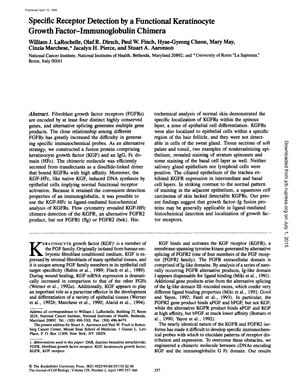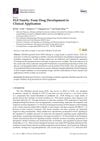Specific Receptor Detection by a Functional Keratinocyte Growth Factor-Immunoglobulin Chimera
April 1995
in “
The journal of cell biology/The Journal of cell biology
”

TLDR A new protein was made to detect specific skin cell growth receptors and worked in normal skin but not in skin cancer cells.
The study presented a novel approach to detect fibroblast growth factor receptors (FGFRs) by constructing a fusion protein composed of keratinocyte growth factor (KGF) and an IgG1 Fc domain, resulting in a chimeric molecule (KGF-HFc). This molecule was secreted as a dimer and bound to KGF receptors (KGFRs) with high affinity. It also induced DNA synthesis in epithelial cells, indicating normal receptor activation. The KGF-HFc chimera was used for histochemical analysis and was able to specifically detect KGFR, but not FGFR1 or FGFR2. KGFRs were found in the spinous layer of normal skin and in specific regions of the hair follicle, but not in sweat gland cells. The chimera also stained nonkeratinizing epithelium in the soft palate and tonsil, as well as intermediate and basal cell layers of the trachea. However, a squamous cell carcinoma of the skin did not show KGFRs. These findings suggest that growth factor-Ig fusion proteins could be widely used for the histochemical detection and localization of growth factor receptors.



